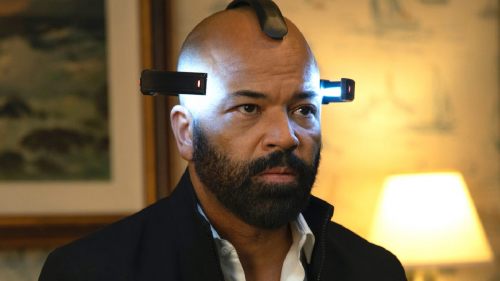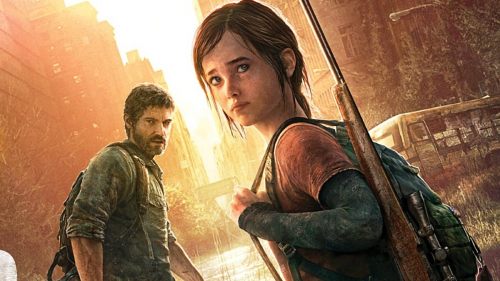WATCHMEN Review: An Exceptional And Timely Reimagining For The Modern Age
On May 31 and June 1, 1921, the predominantly black section of Tulsa, Oklahoma commonly known as Black Wall Street was besieged by riots. Whites, spurred by the apprehension of a 19-year-old shoe-shiner named Dick Rowland – accused of assaulting 17-year-old elevator operator Sarah Page – took up arms and called for a lynching; many black residents retrieved their firearms in response. A harrowing battle ensued, during which 35 square blocks of the district, so-named for being the wealthiest black community in America at the time, were destroyed. More than 6,000 black residents were arrested and held in detention centers, forced to carry special identification. People were shot at indiscriminately. Homes and businesses were looted. White rioters broke into the homes of middle-class whites who employed black people and demanded they surrender their servants. At least one historian has called the event “the single worst incident of racial violence in American history.” To this day, the exact number of black lives lost remains unknown. Early estimates, reported in newspapers and given by local officials, put the number at 36 dead – 21 of whom were black. A 1996 state commission estimated that anywhere from 100 to 300 black residents were killed in the riots. The mass graves reported by multiple witnesses have yet to be found.
There’s a reason why many Americans have never heard of the Tulsa race riot of 1921: In the aftermath, both the black and white communities largely remained silent with few exceptions. The riots were absent from history books for decades. It wasn’t until an official state commission into the event was formed in 1996 that the public was made aware of this particularly horrible moment in history. This is where the story of Damon Lindelof’s Watchmen begins: In the summer of 1921, as a little boy gazes up at a movie screen, in awe of the black vigilante hero on a horse in pursuit of justice. The silent covenant between this boy and the film on-screen is broken by the riots, forcing him out onto the street, where one could easily mistake the action for a second American Civil War – the sort of plausible alternate history casually depicted in Alan Moore and Dave Gibbons’ iconic graphic novel. The boy is secreted away in a horse and buggy with a note, urging persons unknown to look after him. When the buggy is overturned and its driver shot dead, the boy awakens in a field to find a baby girl; he gently retrieves her from the grass and dirt and walks down the road, away from Tulsa; away from a city on fire.
In actuality, the report published by the Oklahoma Commission to Study the Tulsa Race Massacre in 2001 determined that local law enforcement had entered into violent conspiracy with local white residents against the black community. The Commission offered multiple recommendations based on its findings, including formal reparations to survivors and their descendants. This is where the Watchmen pilot, directed by Nicole Kassel, diverges from history. In this version of events, the black community received reparations. In this reimagining of history, Tulsa is a predominantly black city in which a black cop pulls over a white man, who trembles at the tangible possibility of being unjustly shot and killed. In this televised reality, a police officer must obtain proper authorization before using their gun, which is kept in a special holster in their vehicle, which can only be unlocked remotely by a superior.
For a brief moment you may optimistically arrive at a hasty conclusion: that Lindelof’s series – dubbed a “remix” of Moore and Gibbons’ novel – depicts a quasi-utopian near-future in which black Americans have obtained a semblance of equality to a degree that allows them to oppress white men. But Lindelof swiftly and violently disabuses you of any such notion: A black police officer is shot and killed during a routine traffic stop, during which he strongly (and rightfully) suspects the white male driver to be involved with a local white supremacist militia – comprised of men who hide behind masks painted with Rorschach ink blots and release terroristic videos threatening to wage war on local law enforcement. Police officers work in secret, wearing yellow masks to obscure their faces and protect their true identities, not unlike comic book vigilantes; not unlike the Watchmen.
Lindelof’s story predominantly focuses on one such officer: Angela Abar, played by Regina King (who starred in Lindelof’s previous HBO series, The Leftovers). Angela cuts a formidable, awe-inspiring figure in a hooded black trench, a black eye-mask painted across her face, a rope of lethal beads – evocative of oversized rosary – attached to her belt. Upon receiving a message from her captain, Judd Crawford (Don Johnson), Angela works swiftly and without mercy to apprehend a militia man for questioning. In Lindelof’s telling, vigilantes work with law enforcement: the two groups share the burden of and necessity for disguise, but even within this collaborative effort there remains a clandestine element. When Angela brings her man in for questioning, it’s to an undisclosed location, where Looking Glass (Tim Blake Nelson) dons a metallic silver mask to interrogate the suspect while images play across the walls of the round structure to elicit a response. He observes the suspect’s micro-gestures and eye movements, which he examines in conjunction with an analytical readout from the interrogation device. The results are referred to as a Rorschach.
In superficial terms, this Watchmen pays homage to its written predecessor by including familiar names and faces: Jeremy Irons plays an aging Ozymandias, just as wealthy and eccentric and vaguely insidious as the one created by Moore and Gibbons. Judd has a coffee cup shaped like an owl; Doctor Manhattan is glimpsed on a peripheral television screen; the squid incident from the climax of Moore and Gibbons’ book is a historical event in this reality; a drop of blood dramatically drops on a fallen police badge. As far as the pilot is concerned, none of these elements are as consequential as Rorshach, the nihilistic, mentally-ill vigilante whose presence is seen and keenly felt throughout this first episode. It’s the concept of Rorschach that gives Watchmen its narrative and thematic weight; he is the spectre that haunts both sides of an increasingly volatile civil war.
Despite his blatant mental illness, bigotry, misogyny, and proclivity for impetuous violence, there are those who view Rorschach as a hero – a narrow and willful misunderstanding of the vigilante. This deliberate misinterpretation is not all that dissimilar from the incel and alt-right communities, with their misappropriation of The Matrix and co-opting of the “red pill” concept. Or how the men targeted by the dark satire of Chuck Palahniuk’s Fight Club (and David Fincher’s subsequent cinematic adaptation) have come to disturbingly exalt the narrative as some sort of masculine manifesto. It isn’t much different from modern conservative and religious extremists who purposefully distort and misrepresent facts to suit their insidious ambitions – which isn’t different from Hitler’s approach, for that matter, and on and on. But in the case of Watchmen – both the original text and Lindelof’s reimagining – it’s the misappropriation of pop culture iconography that feels of particular import. The white supremacist militia appropriates his image and vocal distortions to sow fear; the vigilantes are trying to reclaim the Rorschach symbol, repurposing the original psychological exam as an interrogation technique in an attempt to root out evil. The latter is a valiant and novel though misguided effort: Rorschach has the potential to be used for good, but that goodness is outweighed by its capacity to be manipulated and co-opted for evil. Destroying the symbol would be a sensible decision, and yet the glimmer of hope – the illusion of righteous power – is too potent.
The militia’s reliance on the Rorschach iconography is not unjustified, however. This is the same Rorschach who openly detested sex workers and gay people, who cloaked his vitriol in poetic monologues insisting his hatred for mankind was that of an indiscriminate nihilist – despite an overtly bigoted tone. Of the two sides in Lindelof’s story, it’s the white supremacists who come closest to accurately depicting a modern iteration of Rorschach, with their notions of terroristic “justice” and their horrific desire to rebalance the racial scales. Reimagining Rorschach for the modern socio-political landscape isn’t all that different from reimagining Travis Bickle for Trump’s America; Todd Phillips tried to do that with Joker, and it went over about as well as expected.
Lindelof shows us the militia as we’d like to see the alt-right in our own world: a violent minority, but a vocal one, existing on the fringes of decent society. The truth is that hatred exists on a spectrum; the militia is the most extreme and blatant end of it, but its impact radiates outward. Shades of it – less dense, more subtle – appear outside the concentrated area, and those occurrences are not random. Watchmen posits a reality in which a program of reparations has been successfully executed with the unintended result of exacerbating existing racism, driving it underground to form a militia – a group of white men hellbent on vengeance for a manufactured victimhood that isn’t just absurdly baseless; it simply doesn’t exist. In this way, Watchmen reads like a piece of tangible realism with the occasional comic book flourish.
Watching the militia espouse their violent racist rhetoric under the craven lie of ostracization and persecution calls to mind one Rorschach quote in particular: “I’m not trapped in here with you. You’re trapped in here with me.” In Moore and Gibbons’ original novel, this line is a badass declaration, a rallying cry of one man whose capacity for violence has been wildly underestimated when he’s stuck in a prison with a bunch of criminals he apprehended. But Lindelof reimagines this, too: The militia has come to believe they are oppressed by people of color, trapped in a hopeless scenario in which violence is their only recourse. The reality – despite the superficial optics, the reparations, the predominantly black community – is that white people are still the oppressive majority, and a show of violence isn’t necessary to reinforce it. The white men who took up arms in the Tulsa race riots of 1921 undoubtedly felt the same as the militia in Lindelof’s Watchmen. They build the walls to segregate and contain, ignorant to the prison they’ve built around themselves. Lindelof calls his Watchmen a remix, but it might be more accurate to refer to it as a re-contextualization; a funhouse mirror in which the uncanny reflection is disturbingly familiar.
One can easily imagine the victims, of either the 1921 riots or Lindelof’s fictional (but all too familiar) militia, responding in kind: “You’re not trapped in here with me. I’m trapped in here with you.”



